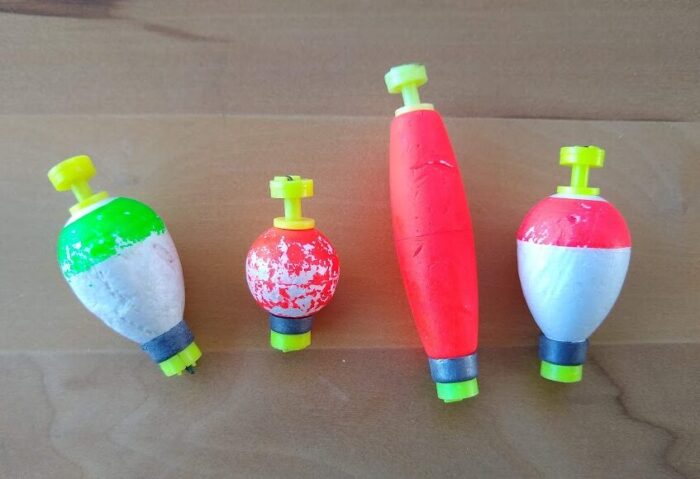When I was first learning how to fish with a bobber, my bite to hook up ratio was terrible. I missed a lot of fish. However, through much research, and hours of practice, I have made a huge improvement. I also learned that it wasn’t all about technique, but also had a lot to do with the gear I was using. Hopefully passing on this information will help some others out.
Quick Answer:
To set the hook when fishing with a bobber, wait for the bobber to go completely under the surface of the water before you pull to set the hook. The fish will likely taste the bait a couple times before it commits to eating it and pulling the bobber under.
As I mentioned above, there is a little more to getting the hook set than your technique and timing. And I’ll get into tackle and gear a little further down, but it is very helpful to understand what is going on with your bait below in relation to how your bobber is reacting.
Reading the Bobber
The bobber has two main jobs. One is to hold your bait at a certain depth where the fish are feeding, and the other is to tell you what is going on with your bait below.
The purpose of this article is to help you improve your hook sets with a bobber, so we are only going to focus on reading the bobber for now.
Bobbers basically give us three different types of signals. There are the twitch or bob, movement across the water, and going under.
Twitch or Bob
Usually the first thing you see when a fish starts interacting with your bait is that the bobber will twitch on the surface, or even be pulled under for a split second only to pop back up.
This happens because the fish is testing out the bait. Cautious fish will bite at the bait and spit it back out instantly just to get a taste and see if there is anything weird about it. If they are smart they might notice the hook or fishing line. And if your bobber is too big, they will feel the pull of it
一个聪明的鱼通常会离开,寻找something else to eat if it finds anything too strange about the bait.
If you are getting a lot of small twitches and bobs but no full commitment from the fish, then either the fish are too small, or your tackle is too big.
Try to use the smallest bobber you can that will still float with your bait. Then make sure you are using the appropriate size line and hook for the fish you are targeting.
It isn’t impossible to set the hook when your bobber is only twitching, but you are going to have to be either very fast or very lucky. Try to set the hook as soon as the bobber moves even the slightest. Remember that the bait is only in the fish’s mouth for a split second.
Sometimes the fish know there is a hook in the bait and will try to pick it off. This will give you lots of chances to try to hook them, but you’ll have better luck if you just switch to lighter, less noticeable tackle.
Moving Across the Surface
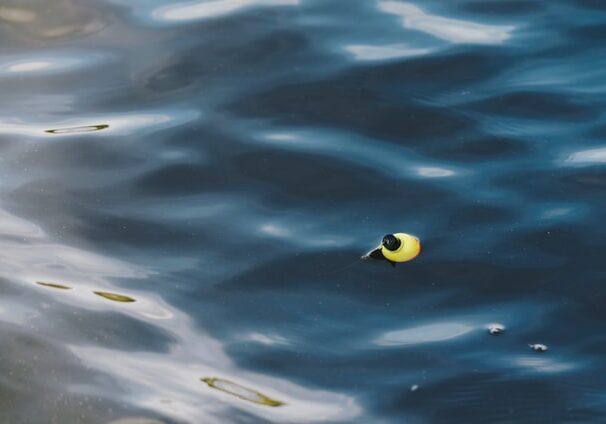
Bobbers don’t just indicate up and down movement, but also side to side. When you see your bobber moving across the surface but not going under, it is because the fish is holding the bait in it’s mouth and swimming off but staying near the surface.
This type of bobber indication is actually good and means you will probably get a good hook set.
A fish that is pulling a bobber is usually pretty committed to eating your bait. If you see your bobber moving across the water, reel in the slack until you feel the weight of the fish, then swing the rod tip quickly to set the hook.
If at all possible, you can try to set the hook in the opposite direction that the bobber is headed. If the fish is moving to the right, swing your hook set to the left and vice versa. This pulls the hook into the corner of the mouth and usually increases your chances of hooking the fish.
Going Under
The most obvious bite indication from a bobber is when it gets pulled completely under the surface of the water.
This indication from the bobber also shows a high commitment from the fish, and good chances of getting the hook set.
What is happening underwater is likely that the fish has taken the bait into its mouth and is pulling it down to where it is more comfortable eating. It could have also felt the pull of the bobber, panicked, and swam downwards already hooked, or forgetting to spit the bait out. Either way you’re likely to get a good hook set.
When you see the bobber go under and stay under, reel in quickly until your line is tight, then swing the rod tip up and back to set the hook.
Often times you may see a few bobs and twitches of the bobber at first. Try to be patient and wait for the bobber to go under and stay under. Try to keep as much slack out of your line so that when the bobber goes under you can set the hook as quickly as possible. If you wait too long, the fish will usually let go of the bait.
Tackle to Improve Your Hook Set When Bobber开云体育客户端
我已经提到了这一点,但使用right tackle for the job is the best way to improve your hook setting with a bobber. I want to talk about bobbers, hooks, line, and your fishing rod.
Bobbers
There are a lot of different shapes and sizes of floats and bobbers on the market. The most common is unfortunately the least effective. That would be the classic red and white plastic bobbers that are round like a ball.
Don’t get me wrong, many many fish have been caught on that style of bobber. However, you can greatly improve your hook sets by using some other styles of bobbers.
Bobber Material
I prefer using foam bobbers. They have better durability and won’t break when your accidently hit a rock. There is also no chance of them filling with water and sinking. Foam by itself is light weight and may be difficult to cast, but many of them can be bought with built in weights to help.
Bobber Shape
The shape of the bobber has a great effect on its sensitivity. This means that a well-shaped bobber will be less noticeable to the fish, and indicate bites much more clearly to the angler.
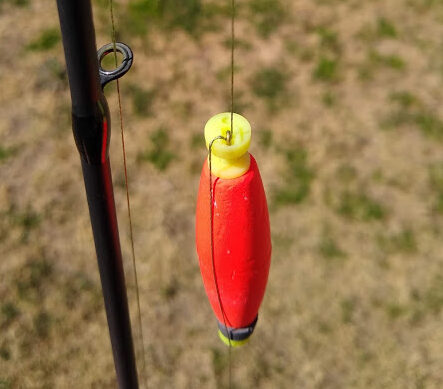
For the ultimate bite detection use a slim cigar shaped bobber. The slimmer it is, the more sensitive. It also will be less noticeable to the fish when they pull on it.
The cigar shaped bobbers will pull through the water much easier when you are setting the hook. This will transfer more of your power into the hook and help you stick more fish.
The Japanese have taken bobbers to the extreme in order to catch herabuna fish. The floats they use are about as thin as they can get and are so sensitive, you’ll know if a fish even swims within a few inches of your bait. I’m not exaggerating.
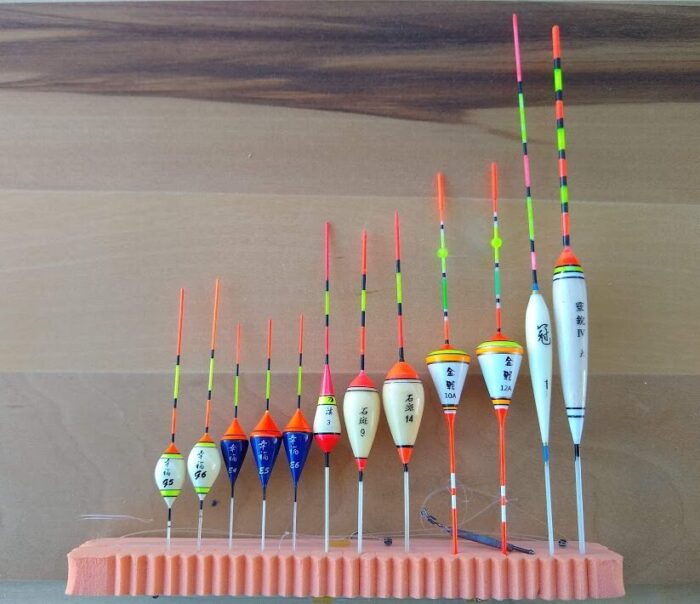
However, the Japanese floats don’t work well with western style fishing unless you are using a cane pole. So, if you are fishing with rod and reel, just stick with cigar floats.
Bobber Size
Bobber size is another thing that has a lot to do with sensitivity and getting a good hook set.
A smaller bobber will be less noticeable to the fish, so they are more likely to commit to eating the bait. And when you go to set the hook, the smaller bobber has less drag in the water and transfers more of your power to the hook.
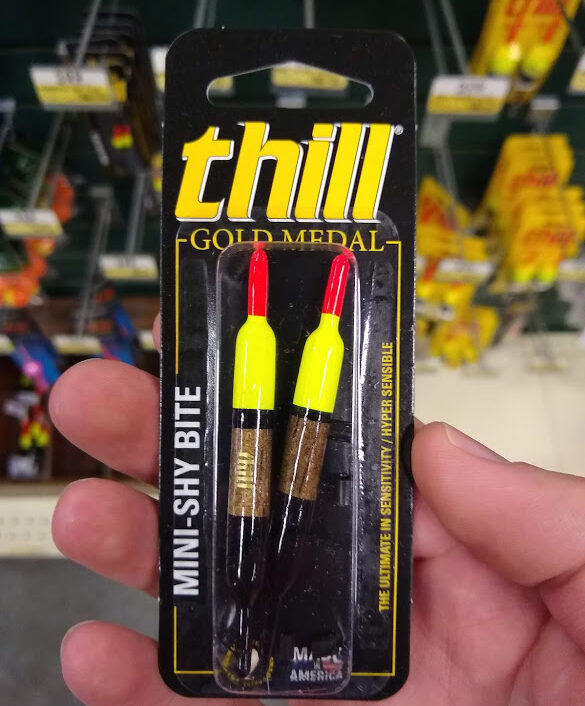
Of course, you can’t go too small. Make sure it can still float your bait. You also need to be able to see it, and depending on how far you are casting, you may have a hard time keeping an eye on it.
Hooks to Improve Hook Sets When Bobber Fishing
One of the best things you can do to improve your hook setting with a bobber is to use super sharp hooks. A sharp hook will catch in a fish’s mouth even before you set the hook.
Most hooks you buy feel sharp to the touch, but could actually be much sharper.
One good test you can do to see if your hook is sharp enough is to tie it to your line, then lay it in the palm of your hand. Next, hold the line and slowly drag the hook across your palm and down over the edge of your hand. At some point, the hook should catch onto your skin. If it doesn’t, then you might want to sharpen it.
您可以使用钻石磨钩子石头或800to 1000 grit sandpaper.
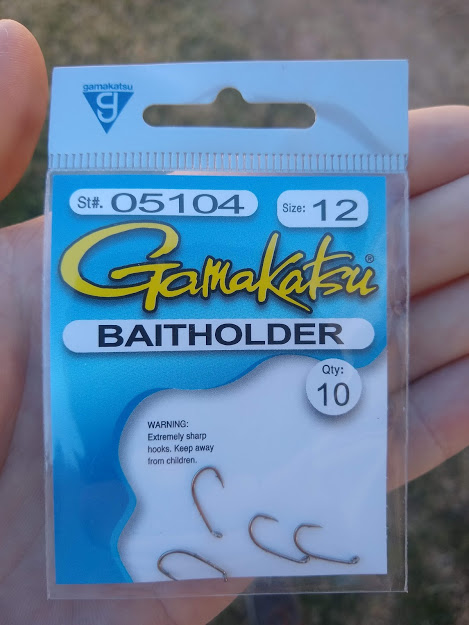
If you don’t want to try sharpening hooks yourself, then just spend a little more money for high quality hooks. Gamakatsu and Owner are two brands that make really sharp hooks right out of the bag.
Fishing Line for Better Hook Sets with a Bobber
Using the right fishing line can sometimes help you to get better hook sets, but I’d focus on everything else first. If you have already tried everything else, and you just like getting your gear dialed in, then here are some details about fishing line and bobbers.
Floating Line for Bobber Fishing
The reason to use floating line for bobber fishing is twofold. A floating line is easier to mend when fishing in currents. And it gives you more direct contact and thus better energy transfer when you are setting the hook.
Since this article is about improving hook sets when bobber fishing, I’m only going to talk about the second reason.
If your using a sinking line, as you are waiting for the fish to bite, the length of line between you and the bobber is slowly sinking and creating a long belly in the line. When a fish does bite, you will reel to pick up the slack, but in doing so, there is so much drag on the line that it pulls the bobber, the fish notices you and drops the bait.
If your line is floating on the surface, then when you get a bite, you can reel in the slack with less affect on the bobber. Once you feel the weight of the fish, your line is off the water and you have a more direct hook set.
There are three main types of fishing line on the market. Monofilament sinks, while fluorocarbon and braid float for the most part. For this reason, some bobber anglers will use fluoro or braid.
Again, your fishing line probably won’t make a huge difference in your hook sets, but if you are like me and just love getting things dialed in, then go for it.
Also if you aren’t sure what fishing line to use for the fish you are targeting, check out this article and guide on how tochoose the right fishing line.
Bobber Rod Length and Hook Sets
The last thing I want to talk about is rod length. This can also improve your hook setting when bobber fishing, but don’t feel like you have to get a new rod.
If you look up fishing rods designed specifically for bobber fishing, you’ll see that they are generally much longer than other rods. The longer length has to do with mending line when fishing rivers, casting lighter rigs farther, and getting more line pick-up for hook setting.
I’m going to focus on the hook setting quality. A longer rod means that when you are holding the rod out horizontal waiting for the fish to bite, then swing it up to 90 degrees vertical for the hook set, the tip of the rod is moving a much greater distance than a short rod. This means you are picking up more line and getting a lot more power transferred to the hook.
Conclusion
Setting the hook when bobber fishing has a lot to do with timing, but can also be helped greatly by using the right gear and tackle.
I have noticed that the two biggest improvements most people can make are to use a more sensitive bobber, and sharper hooks.
